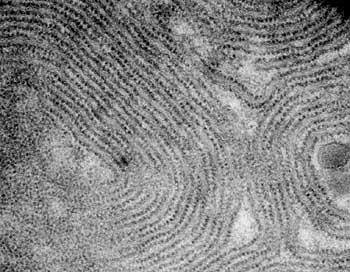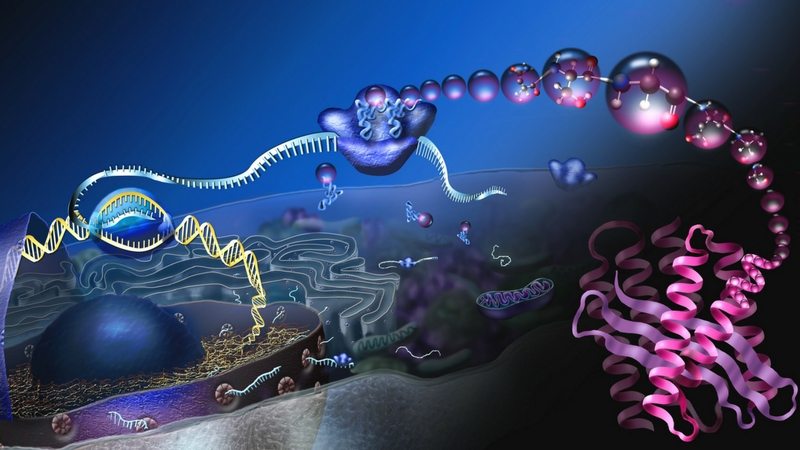Ribosomes
Episode #8 of the course The molecular building blocks of life by Dr. Bill Thomas
So far in this course, we’ve seen how small molecules are assembled into DNA, producing the genetic code that makes life on Earth possible. We’ve learned that DNA encodes genes, which are blueprints for building proteins, and we’ve discussed the first step required in using these blueprints to produce their proteins. That first step, called transcription, involves making an RNA copy of a single gene, called a messenger RNA, or mRNA. An mRNA can then carry its molecular message to the protein-making machinery of the cell. In this lesson, we’ll look at that protein-making machinery, which is called the ribosome.
Another Type of RNA
Ribosomes are molecular machines that are made from a specialized type of RNA called ribosomal RNA, or rRNA. Unlike messenger RNA, ribosomal RNA contains no genes and is not translated into a protein. Instead, rRNA permanently combines with proteins to form a hybrid molecule that contains both RNA and protein, called a ribonucleoprotein. It takes two of these ribonucleoproteins, one small and one large, to make a complete ribosome. These two components of the ribosome remain separate until they come into contact with a mRNA, at which point, they assemble into a single ribosome clamped onto a single strand of mRNA.
Getting Started
The ribosome slides along the mRNA, scanning the molecule until it comes to the three nucleotides that represent the first amino acid in the protein. These three nucleotides are nearly always “AUG,” a codon for the amino acid methionine (recall from Lesson 4 that codons are three-nucleotide “words” for an amino acid). Because methionine is nearly always the first amino acid in any protein, AUG is also frequently referred to as the “start” codon. Once the ribosome has found the start codon, it begins assembling the chain of amino acids that will eventually take shape into the protein described by the gene.
Putting It All Together
The ribosome continues to slide along the strand of messenger RNA, “reading” the genetic code one codon at a time. At each codon, the ribosome adds the next amino acid to the growing chain, called a polypeptide, that will eventually become a functioning protein. And as seen in our lesson on amino acids, when this polypeptide is complete, the amino acids in the chain will interact with each other and the environment of the cell, causing it to fold into its final protein shape.
Translating the Genetic Code
Eventually, the ribosome encounters a “stop” codon, which is a three-nucleotide sequence that does not code for any amino acid. At this point, the ribosome falls off the mRNA and disassembles, releasing the amino acid chain so it may assume its final protein shape and begin its function in the cell. This process of translating the genetic code from a messenger RNA into a functioning protein is called, appropriately enough, translation.
Because ribosomes translate proteins from messenger RNA, rather than translating directly from DNA, it is possible for cells to scale up the production of a particular protein very quickly. By making multiple transcripts of a gene, a cell can have many mRNA copies of a gene at once, all of which can be simultaneously translated into proteins by ribosomes. However, this means that cells require many, many ribosomes to handle all this translation. It is no surprise, therefore, that there are hundreds of genes in the human genome dedicated to making ribosomes.

The cytoplasm is full of ribosomes translating mRNA coding. Each dot seen on the micrograph represents a ribosome.
Photo: Electron micrograph of salivary glands in Chironomus tentans. Hans Mehlin, Department Cell and Molecular Biology, Karolinska Institutet and Nobelprize.org.
But where does the ribosome get the right amino acids to assemble them into a chain? In the next lesson, we’ll look at the third major type of RNA, transfer RNA, which plays an important role in this process.
Recommended book
Cell Biology by the Numbers by Ron Milo, Rob Phillips
Share with friends

